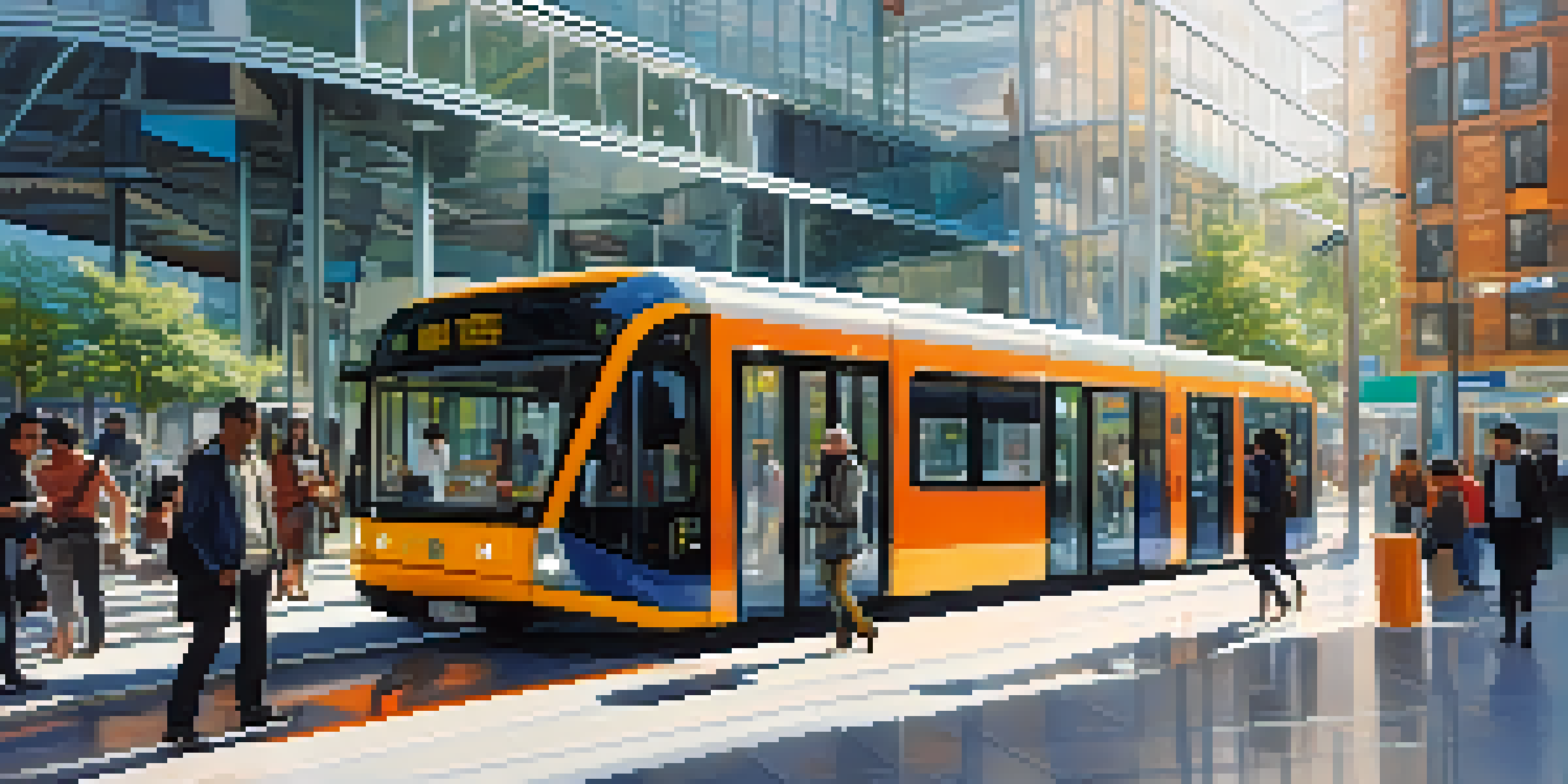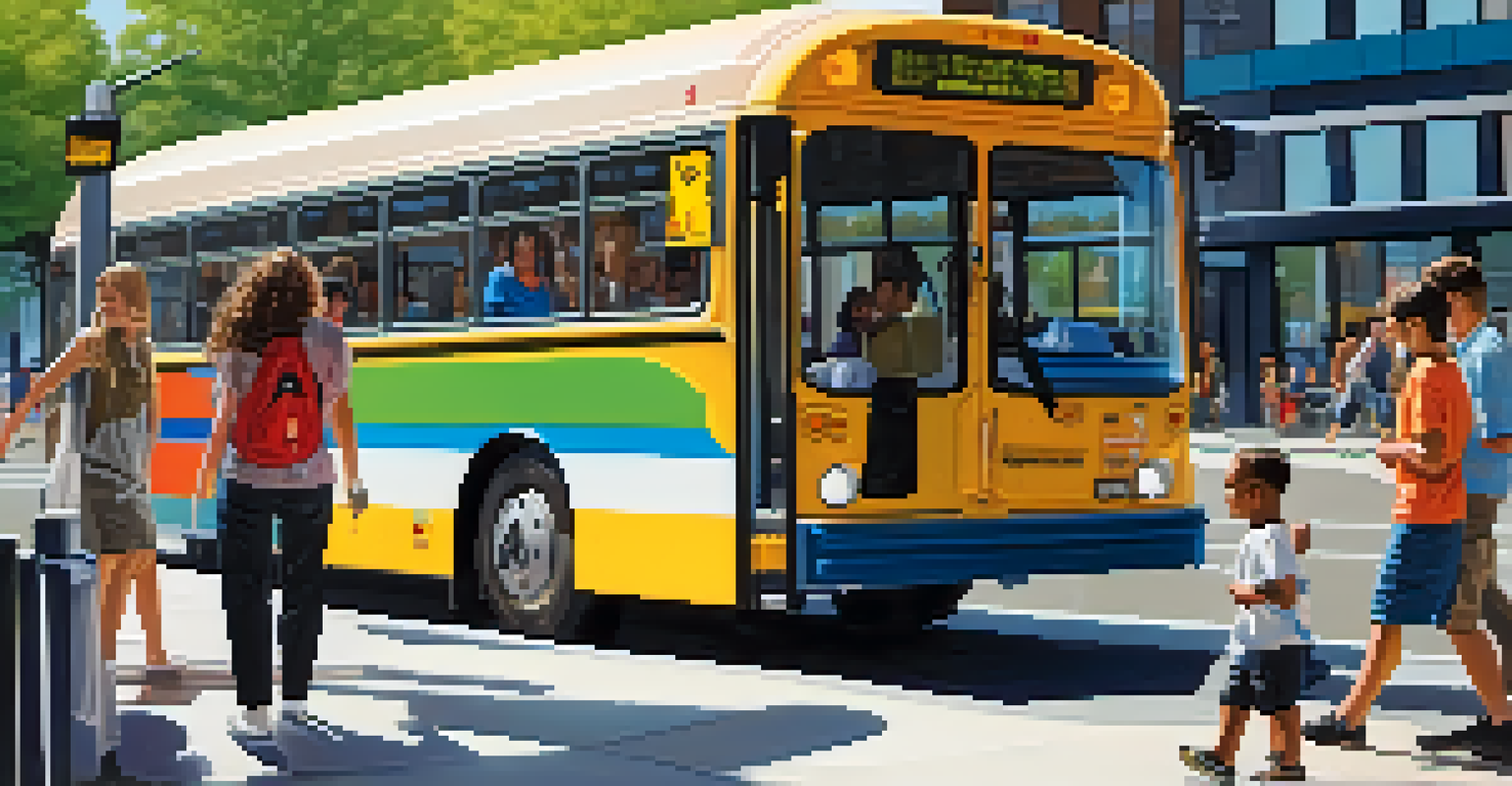Public Transport Accessibility: A Key Factor in Property Pricing

Understanding Public Transport Accessibility
Public transport accessibility refers to how easily residents can access various modes of transportation, such as buses, trains, and trams. It plays a crucial role in urban planning, ensuring that people can commute conveniently without relying solely on personal vehicles. This accessibility not only enhances mobility but also promotes economic growth within communities by connecting people to jobs and services.
Public transport is the backbone of urban life, enabling people to connect to opportunities and resources.
Consider a neighborhood with a well-connected subway system compared to one that is isolated and difficult to reach. The former tends to attract more residents who prioritize convenience, leading to higher demand for housing. This increased interest can significantly influence property prices, making accessibility a vital consideration for potential homeowners and investors alike.
Ultimately, understanding public transport accessibility helps buyers and sellers alike make informed decisions. It's not just about the physical distance to transport hubs; factors like frequency of service and coverage also come into play, painting a full picture of a location's desirability.
How Accessibility Drives Property Demand
When a neighborhood boasts easy access to public transport, it often becomes a hotspot for homebuyers. Families, young professionals, and retirees alike appreciate the convenience of quick commutes to work or leisure activities. This collective demand can drive property values upward, as more people vie for limited housing options in accessible areas.

For example, areas near major train stations or bus routes typically see a surge in interest. As demand increases, homeowners may find themselves in bidding wars, further elevating property prices. This pattern demonstrates how accessibility can create a ripple effect on the local housing market, benefiting sellers while challenging buyers.
Accessibility Boosts Property Demand
Neighborhoods with easy access to public transport often see increased interest from homebuyers, driving up property values.
In many cases, neighborhoods with poor transport options struggle to attract buyers, leading to stagnated property values. Thus, accessibility isn't just a convenience; it's a fundamental factor influencing property demand and market dynamics.
The Economic Benefits of Accessible Transport
Public transport doesn't just ease individual commutes; it also stimulates local economies. Accessible transport hubs can attract businesses looking to capitalize on foot traffic and a larger customer base. Consequently, this economic uplift can lead to increased property values, as commercial growth enhances a neighborhood's overall appeal.
The greatest advancements in urban planning arise when we prioritize accessibility and mobility for all.
For instance, cities that invest in expanding their transport networks often see a corresponding rise in property prices. With more businesses opening in accessible areas, residents enjoy improved amenities and services, making these locations even more desirable. This creates a positive feedback loop where accessibility and economic growth feed off each other.
Moreover, improved public transport can lead to job creation, further boosting the local economy. As the community thrives economically, property values tend to rise, demonstrating the interconnectedness of accessibility and financial prosperity.
Public Transport Accessibility and Urban Development
Urban development and public transport accessibility go hand in hand. City planners often prioritize transport links when designing new residential and commercial areas, recognizing that connectivity is key to attracting residents and businesses. This strategic planning can lead to neighborhoods that flourish because of their accessibility, ultimately raising property values.
As new housing developments arise near transport hubs, property prices often reflect the desirability of these locations. Buyers are increasingly drawn to areas where they can easily navigate the city, which can make properties in less accessible areas seem less appealing by comparison. This trend emphasizes the importance of planning for accessibility in urban development.
Economic Growth from Transport Hubs
Accessible public transport attracts businesses and stimulates local economies, leading to higher property values and improved amenities.
By focusing on public transport accessibility, cities can create vibrant communities that offer both convenience and quality of life. This focus not only benefits current residents but can also attract newcomers, contributing positively to the local property market.
Challenges of Poorly Accessible Areas
In contrast, neighborhoods with limited public transport options face significant challenges. Residents in these areas often rely on personal vehicles, which can be cumbersome and costly. As a result, potential buyers may shy away from such locations, leading to stagnation or even decline in property values.
Consider a community on the outskirts of a city, where residents have to travel long distances to access public transport. These logistical hurdles can deter families and young professionals, making it difficult for property owners to sell their homes at favorable prices. This situation highlights how accessibility can make or break a neighborhood's appeal in the housing market.
Furthermore, areas with poor transport links may struggle to attract new businesses, limiting economic growth. Without the influx of new residents and commercial opportunities, property values can remain stagnant, reinforcing the cycle of decline in these less accessible neighborhoods.
Future Trends in Public Transport Accessibility
As cities evolve, so do the methods of enhancing public transport accessibility. Innovations such as ridesharing, electric scooters, and autonomous vehicles are shaping the way people navigate urban environments. These trends could redefine accessibility, creating new opportunities for neighborhoods to increase their appeal and property values.
For example, the integration of smart technology in public transport systems can provide real-time updates, improving the overall commuting experience. As cities embrace these advancements, areas with enhanced transport options are likely to see a rise in demand from buyers who value convenience and modern amenities.
Poor Access Stifles Neighborhood Appeal
Areas with limited public transport options struggle to attract buyers and businesses, resulting in stagnating or declining property values.
Ultimately, staying attuned to these future trends can help buyers and investors make savvy decisions. Understanding how public transport accessibility is evolving will be crucial for those looking to navigate the ever-changing property market effectively.
Conclusion: The Importance of Public Transport Accessibility
In conclusion, public transport accessibility is a critical factor that significantly influences property pricing. As we've explored, neighborhoods with robust transport links often enjoy higher demand and property values, while those lacking accessibility face challenges. This dynamic underscores the importance of considering transport options when evaluating potential property investments.
As urban areas continue to develop, the relationship between public transport and property prices will only grow stronger. Buyers, sellers, and investors must keep this connection in mind when making decisions in the real estate market. By prioritizing accessibility, communities can thrive economically and socially, creating desirable places to live and work.

In a world where convenience matters more than ever, understanding the impact of public transport on property values will empower stakeholders to make informed choices that benefit them and their communities.